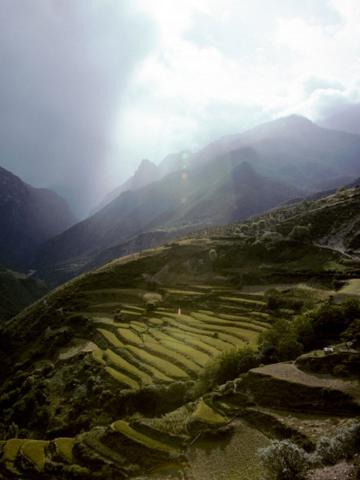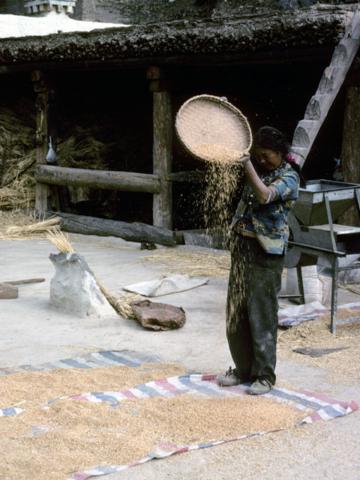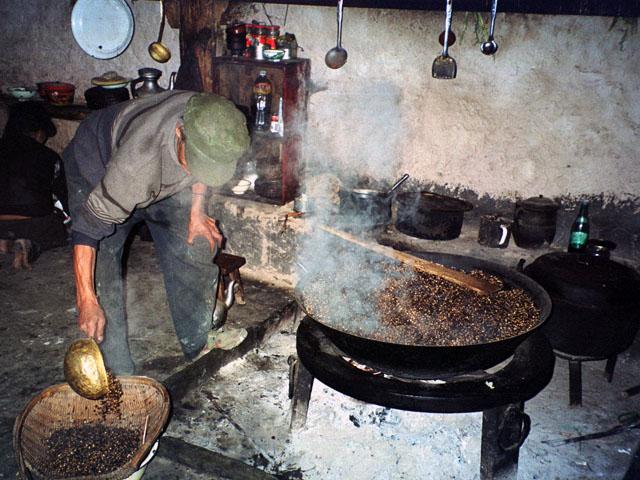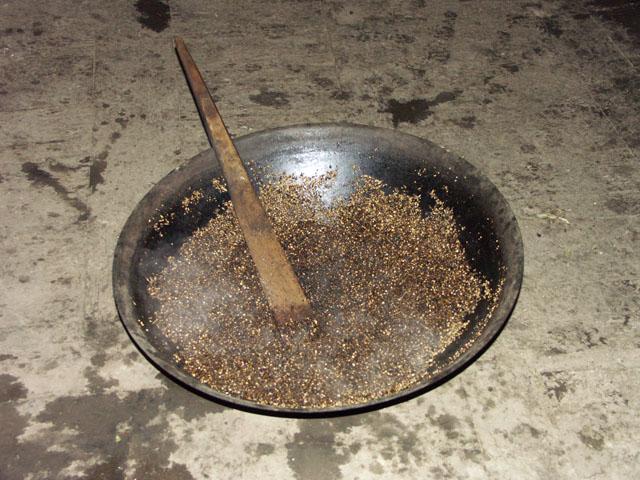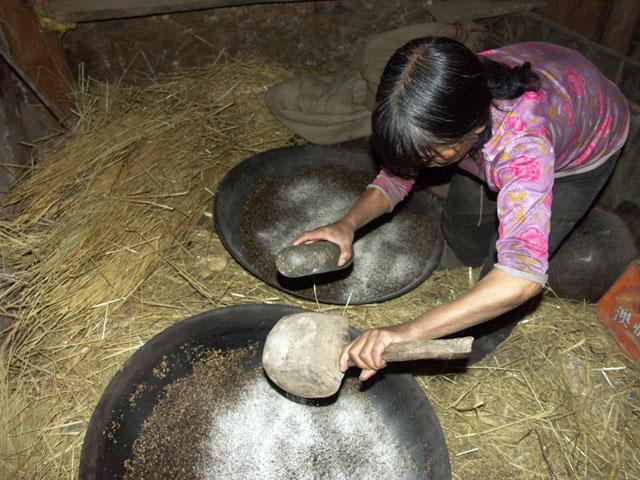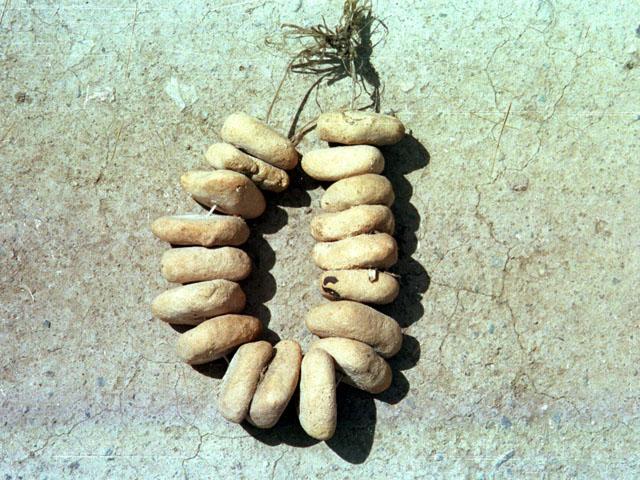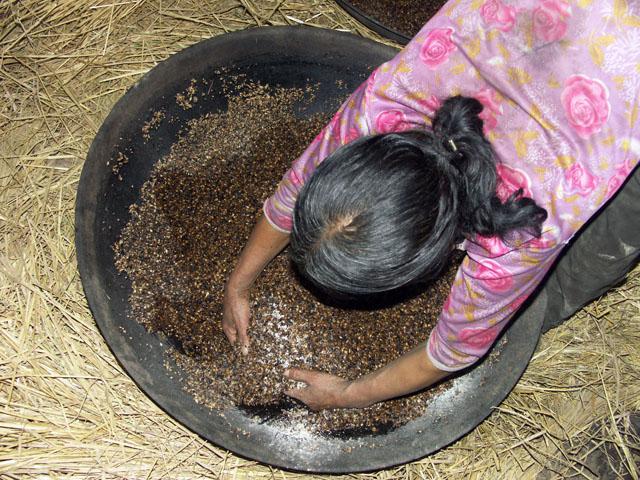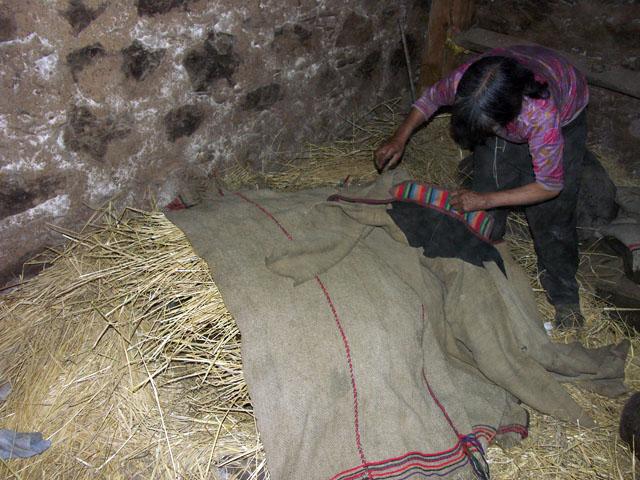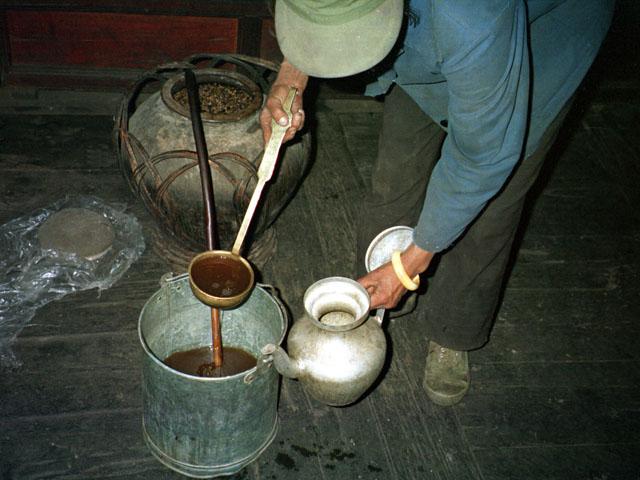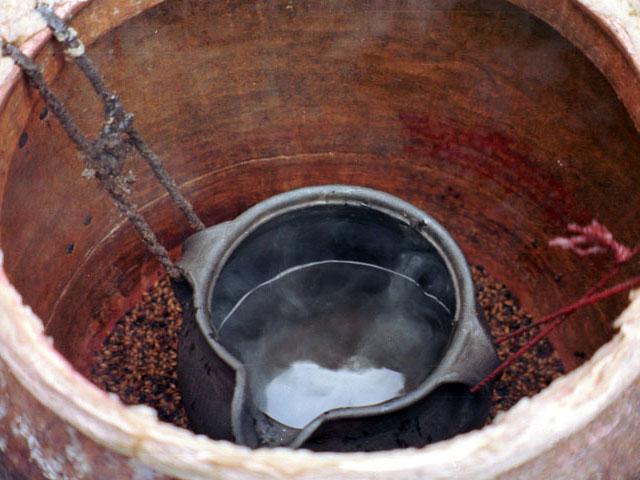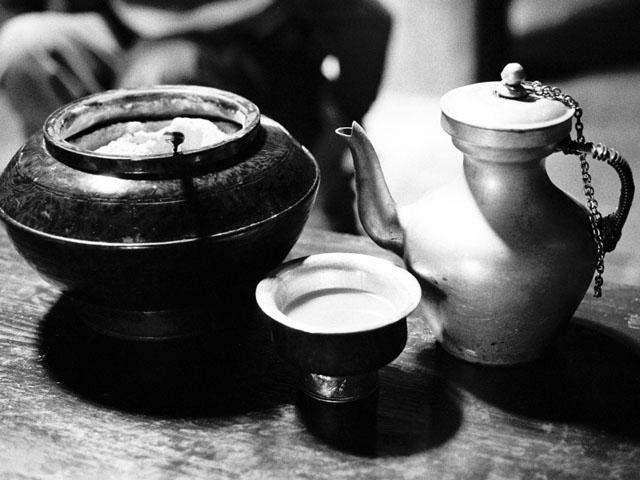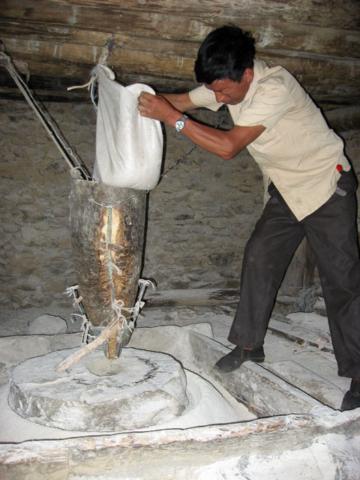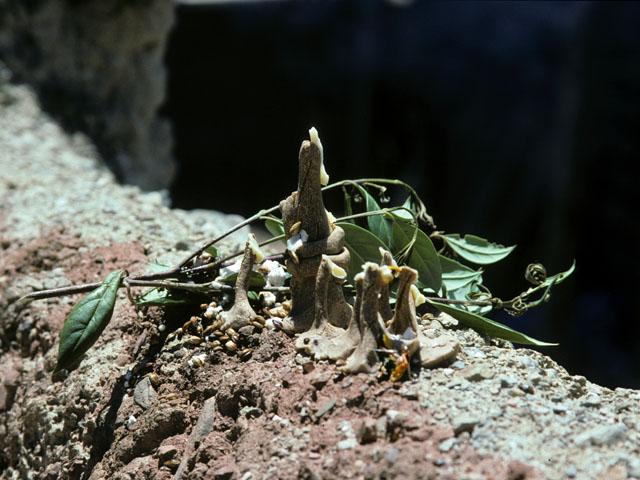To make barley wine, the grain is roasted. After roasting, water is added and the barley grains are cooked until all water is absorbed
To make barley wine, the grain is roasted. After roasting, water is added and the barley grains are cooked until all water is absorbed
Three to four mortared ‘‘chu’’ (white rings containing fish liver, honey, and other ingredients) are added to facilitate the fermentation process
Three to four mortared ‘‘chu’’ (white rings containing fish liver, honey, and other ingredients) are added to facilitate the fermentation process
Three to four mortared ‘‘chu’’ (white rings containing fish liver, honey, and other ingredients) are added to facilitate the fermentation process
Barley wine can be extracted as early as three days after the pots are sealed but the pots also can be stored for several months
Beside barley wine, butter tea and tsampa (roasted barley flour) play an important role in the daily diet
The grains are milled with a vertical waterwheel mill, which is in a small stone hut built adjacent to streams in side valleys
a: wooden water channel b: multiple-winged waterwheel c: upper, moving mill stone d: wooden stick transferring vibrations from the millstone to the grain feeder e: grain feeder

